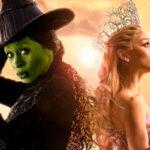

When thinking of fast food, it’s impossible not to remember McDonald’s, the giant that revolutionized the way the world consumes quick meals. Founded in 1940 by Richard and Maurice McDonald, and later transformed by the visionary Ray Kroc, McDonald’s has become a global icon, known for its golden arches and the famous Big Mac. But what makes this chain so fascinating goes beyond its products and logos.
From innovations in services and menus adapted to local cultures to brilliant marketing strategies and intriguing stories about its employees and entrepreneurs, McDonald’s is a true melting pot of curiosities.
In this text, we will explore some of the lesser-known aspects of this brand that, over the decades, has won millions of hearts and stomachs around the world.
1 – VISITING A SMALL DRIVE-IN
Ray Kroc was a salesman of multimixers, machines capable of preparing six milkshakes simultaneously. In 1954, he decided to visit a small drive-in specializing in hamburgers that needed eight of these machines at once.
The place was owned by brothers Dick and Maurice McDonald, where customers lined up to buy a hamburger for 15 cents or a portion of fries for 10 cents. Kroc saw a great opportunity and thought that if the McDonald’s expanded to 10 more locations, he could sell up to 80 multimixers.
2 – OPENING NEW UNITS
The brothers already had some franchises, but many of them did not follow the established standards, negatively affecting the brand’s reputation. Nevertheless, Kroc managed to persuade them to open new units.
He went to Chicago with a restaurant blueprint, a special recipe for fries, and a contract authorizing him to seek new locations for branches. The main requirement was that all new stores should look the same as the original in San Bernardino.
3 – KROC WAS VERY DEDICATED
The first unit, opened in April 1955 in Des Plaines, Illinois, was a huge success. By 1957, the chain already had 37 establishments. Kroc’s dedication to the business was intense, and he quickly grew tired of the McDonald brothers’ apathy.
Thus, he acquired the company for US$2.7 million, financed by an investor.
4 – THE ORIGIN OF RONALD MCDONALD
The character Ronald McDonald, the iconic clown of McDonald’s, was created to become the central figure in the fast food chain’s advertising campaigns and attract a young audience. The idea of a clown to represent the brand emerged in the 1960s, with the goal of establishing a fun and friendly connection with children.
Ronald McDonald made his debut in 1963, with the help of actor Willard Scott, who was the first to portray the character. Scott, who had previously worked as a clown on a local television show, was chosen due to his experience and charisma. The clown’s appearance was inspired by a combination of traditional clown costumes and the company’s trademarks, such as the red and yellow striped outfit and red hair.
The character quickly became a success and gained worldwide popularity. Ronald McDonald was featured in numerous television commercials, promotional events, and social campaigns, solidifying his role as the “ambassador” of McDonald’s.
Over time, the character evolved and became associated with various initiatives aimed at children and charitable causes, such as the “Ronald McDonald House”, which provides support to families with children undergoing medical treatment.
5 – THE FIRST DRIVE-THRU
The first McDonald’s drive-thru opened in 1975 in Santa Barbara, California. This innovation was created to offer added convenience to customers, allowing them to place their orders and pick up their meals without having to leave their cars.
6 – THE ORIGINAL MENU
The original menu of the first restaurant in the country included cheeseburgers, hamburgers, fish fillets, fries, apple pie, sundaes, Coca-Cola, and orange juice.
7 – EVERYTHING HAS TO BE EXACTLY THE SAME
The hamburger has a patty that is 16 millimeters thick. According to the chain’s quality standards, the cone ice cream, which must be 7.5 centimeters high, should be served with 3.5 turns of product, forming a peak at the tip. The fries are cooked in cottonseed oil.
8 – ROCK IN RIO
McDonald’s stand at the first edition of the Rock in Rio festival in 1985 covered an area of 1,500 square meters. The restaurant set a world sales record in a single day, selling 58,185 sandwiches.
9 – THE DOCUMENTARY “SUPER SIZE ME”
The documentary “Super Size Me”, released in 2004 and directed by Morgan Spurlock, is a critical examination of the impact of fast food on health. Spurlock conducts a personal experiment in which he spends an entire month consuming only McDonald’s food. During this period, he restricts himself to three meals a day at the restaurant and accepts the “Super Size” option whenever offered.
The goal of the documentary is to examine the effects of excessive fast food consumption on physical and mental health. Over the month, Spurlock documents a significant weight gain, health issues such as headaches, fatigue, and mood swings, as well as an overall negative impact on his quality of life.
The documentary also explores issues such as obesity in the United States, the influence of the food industry, and the lack of regulations on food advertising to children. “Super Size Me” was widely discussed for its provocative approach and sparked debates about eating habits and fast food industry practices.
The documentary had a significant impact on public opinion and led to changes in marketing practices and menus at some fast food chains.
10 – MILLIONS OF JOBS
The chain hires around 1 million people every year in the U.S.
11 – GLOBAL SUCCESS
Approximately 68 million people eat at McDonald’s daily. Additionally, a new restaurant in the chain opens every 14.5 hours, on average.
12 – OVER $60 MILLION PER DAY!
McDonald’s generates significant daily revenue, but the exact amount can vary depending on various factors such as location and store performance. In 2023, McDonald’s reported annual revenue of approximately US$23 billion.
If we divide this by 365 days, McDonald’s earns an average of about US$63 million per day. This amount is an estimate and can vary based on sales fluctuations and other economic factors.
In summary, McDonald’s is not only a globally recognized name but also a cultural icon that has shaped the way we perceive fast food.
Since its inception, the brand has evolved from a simple drive-in to a global powerhouse, introducing innovations like the drive-thru and setting impressive records. McDonald’s success can be attributed to its ability to adapt to market demands and its effective marketing strategy.
Curiosities such as the creation of Ronald McDonald and the impressive daily revenue reveal how the chain has managed to stay relevant and popular over the decades.
As the company continues to expand and innovate, it also faces challenges and criticisms, particularly regarding health and sustainability.
However, McDonald’s impact on the food industry and global culture is undeniable, solidifying its place as one of the biggest names in fast food.








